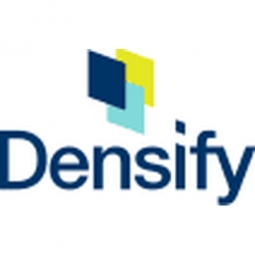
Technology Category
- Infrastructure as a Service (IaaS) - Private Cloud
- Infrastructure as a Service (IaaS) - Virtual Private Cloud
Applicable Industries
- Cement
- Finance & Insurance
Applicable Functions
- Procurement
Use Cases
- Construction Management
- Infrastructure Inspection
Services
- Cloud Planning, Design & Implementation Services
- Hardware Design & Engineering Services
The Customer
Raiffeisen Bank Aval
About The Customer
Raiffeisen Bank Aval is one of the top five commercial banks in Ukraine. The bank offers a wide range of standard and up-to-date banking services to more than 2.5 million customers. As a large financial institution, Raiffeisen Bank Aval has a significant need for efficient and cost-effective cloud infrastructure. The bank was in the process of modernizing their private cloud infrastructure when they encountered difficulties with validating hardware requirements against purchase recommendations made by the hardware vendor. This led to an expected increase in hardware costs for the transformation project.
The Challenge
Raiffeisen Bank Aval, one of the top five commercial banks in Ukraine, faced a significant challenge in modernizing their private cloud infrastructure. The bank was struggling with validating hardware requirements against purchase recommendations made by the hardware vendor. This resulted in an expected additional 33% in hardware costs for the transformation project. The existing cloud environment had a VM-to-host ratio of 24:1, and it consisted of 38 VMware hosts and 923 virtual machines. The bank needed a solution that would help them avoid these additional expenses and ensure that their private cloud resources were perfectly aligned to workload demand patterns and business cycles.
The Solution
Raiffeisen Bank Aval partnered with Densify to address their challenge. Densify ingested all historical VM utilization metrics across the private cloud infrastructure and leveraged machine-learning-driven analytics to model the utilization patterns. This established unique workload profiles for 923 of Raiffeisen’s VMs. With a clear understanding of the workload profiles and new hardware benchmarks, Densify performed in-depth predictive analysis across the infrastructure. This allowed them to scientifically place these workloads onto fewer hosts, while at the same time rightsizing the VMs based on demand patterns. Densify considered factors such as CPU and memory thresholds and overcommit ratios, time-of-day utilization patterns, recurring transaction activities, production versus test and dev environments, Windows and Linux software licensing, benchmarks of new HPE Synergy 480 Gen10 hardware, and high availability during multidimensional permutation analysis.
Operational Impact
Quantitative Benefit

Case Study missing?
Start adding your own!
Register with your work email and create a new case study profile for your business.
Related Case Studies.

Case Study
System 800xA at Indian Cement Plants
Chettinad Cement recognized that further efficiencies could be achieved in its cement manufacturing process. It looked to investing in comprehensive operational and control technologies to manage and derive productivity and energy efficiency gains from the assets on Line 2, their second plant in India.

Case Study
Real-time In-vehicle Monitoring
The telematic solution provides this vital premium-adjusting information. The solution also helps detect and deter vehicle or trailer theft – as soon as a theft occurs, monitoring personnel can alert the appropriate authorities, providing an exact location.“With more and more insurance companies and major fleet operators interested in monitoring driver behaviour on the grounds of road safety, efficient logistics and costs, the market for this type of device and associated e-business services is growing rapidly within Italy and the rest of Europe,” says Franco.“The insurance companies are especially interested in the pay-per-use and pay-as-you-drive applications while other organisations employ the technology for road user charging.”“One million vehicles in Italy currently carry such devices and forecasts indicate that the European market will increase tenfold by 2014.However, for our technology to work effectively, we needed a highly reliable wireless data network to carry the information between the vehicles and monitoring stations.”

Case Study
Safety First with Folksam
The competitiveness of the car insurance market is driving UBI growth as a means for insurance companies to differentiate their customer propositions as well as improving operational efficiency. An insurance model - usage-based insurance ("UBI") - offers possibilities for insurers to do more efficient market segmentation and accurate risk assessment and pricing. Insurers require an IoT solution for the purpose of data collection and performance analysis

Case Study
Smooth Transition to Energy Savings
The building was equipped with four end-of-life Trane water cooled chillers, located in the basement. Johnson Controls installed four York water cooled centrifugal chillers with unit mounted variable speed drives and a total installed cooling capacity of 6,8 MW. Each chiller has a capacity of 1,6 MW (variable to 1.9MW depending upon condenser water temperatures). Johnson Controls needed to design the equipment in such way that it would fit the dimensional constraints of the existing plant area and plant access route but also the specific performance requirements of the client. Morgan Stanley required the chiller plant to match the building load profile, turn down to match the low load requirement when needed and provide an improvement in the Energy Efficiency Ratio across the entire operating range. Other requirements were a reduction in the chiller noise level to improve the working environment in the plant room and a wide operating envelope coupled with intelligent controls to allow possible variation in both flow rate and temperature. The latter was needed to leverage increased capacity from a reduced number of machines during the different installation phases and allow future enhancement to a variable primary flow system.

Case Study
Automated Pallet Labeling Solution for SPR Packaging
SPR Packaging, an American supplier of packaging solutions, was in search of an automated pallet labeling solution that could meet their immediate and future needs. They aimed to equip their lines with automatic printer applicators, but also required a solution that could interface with their accounting software. The challenge was to find a system that could read a 2D code on pallets at the stretch wrapper, track the pallet, and flag any pallets with unread barcodes for inspection. The pallets could be single or double stacked, and the system needed to be able to differentiate between the two. SPR Packaging sought a system integrator with extensive experience in advanced printing and tracking solutions to provide a complete traceability system.




